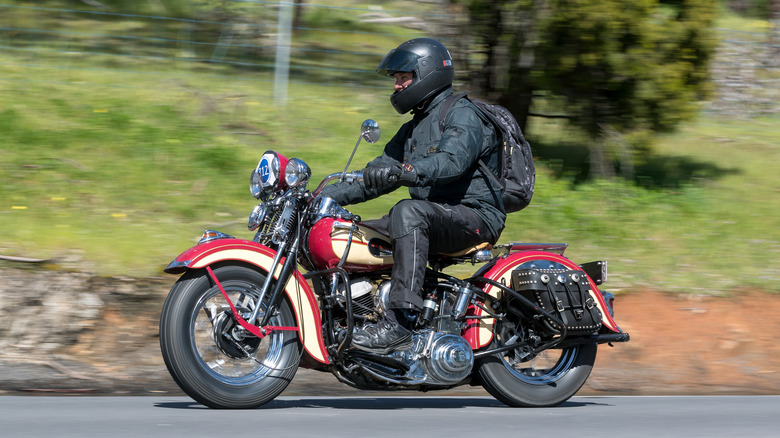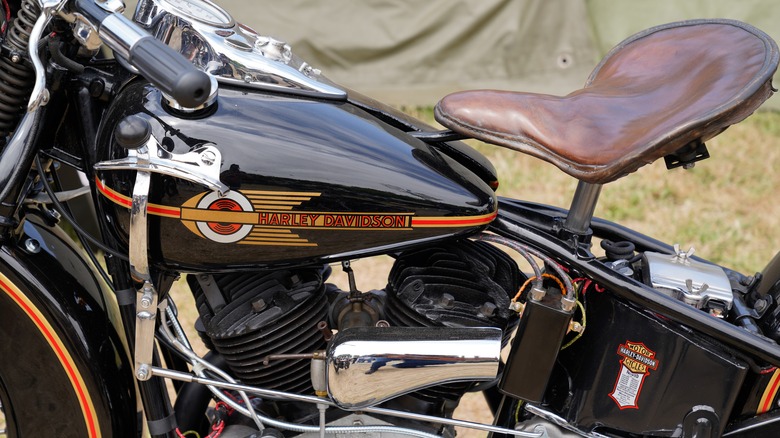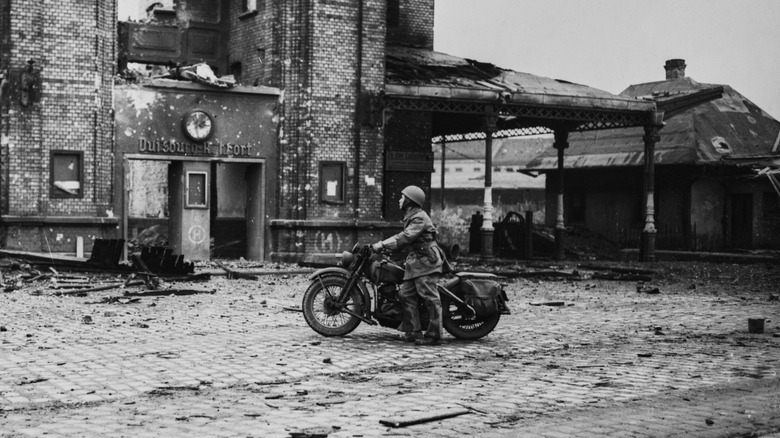What's The Top Speed Of A Harley-Davidson WL & Which Engine Powered The Classic Street Bike?
It's no secret that owning a Harley-Davidson motorcycle is on many bikers' to-do lists. These motorcycles embody the spirit of timeless Americana, whether that would be a classic 1992 FXR with chrome finishes, or a Nightster, or maybe a Nighster Special with black-out details. As a company that has been making motorcycles for over a century, Harley knows its stuff when it comes to motorcycle manufacturing. You might think that only its recent motorcycles attract attention, but that's where you'll be mistaken. Some of its best bikes come from its earlier years, one of which is the revered Harley-Davidson WL, a motorcycle series that dominated many roads during the 1940s and 1950s.
The WL was a work of wonder during its time. That might have explained why Harley-Davidson fashioned a separate variant, the WLA, during World War II to aid the war effort. The WL showcased the company's renowned 45 cubic inch (737cc) Flathead engine, widely regarded as one of the best engines Harley-Davidson ever made. With this motor, the WL boasted 25 horsepower and a top speed of 65 mph. Despite the seemingly low horsepower output, this engine would stay around for decades, with its production finally ending in 1973. Let's explore the Harley-Davidson WL and its Flathead engine to understand what endeared them to so many hearts.
The WL was a handsome bike
Harley-Davidson debuted the WL series of motorcycles in 1937, presenting a robust and reliable machine that could withstand rigorous use. The bike was relatively cheap, with production years like 1947 selling for $490, equivalent to about $7,000 today. Harley offered the WL as the basic model in the series, with variants such as the sportier WLD and the military WLA also featuring in the lineup. The base version of the WL was a handsome-looking motorcycle, from its sturdy frame to the overall silhouette of the bike. Even though its 45 cubic inch motor wasn't the most powerful, it was dependable as it was versatile.
The engine had been launched in 1929 and featured a bore and stroke of 2.75 inches by 3.81 inches. In the WL, Harley paired it with a three-speed, handshift transmission and a dry multi-disk clutch. The 45 Flathead became beloved because it was easy to tune, while also being simple to maintain, especially for the everyday bike owner. After the WL series was discontinued, Harley continued to feature the Flathead engine in other bikes until it was put to rest in 1973. During the 40s and 50s, the WL still had time to shine, and it did so during one of humanity's darkest times.
The Harley fit for a world war
As the U.S. stepped into World War II, Harley-Davidson stepped up with the WL series as its go-to motorcycle for the war. From the WL, the motorcycle company fashioned the WLA, which was more military-focused than its siblings. Even so, the bike still featured the same 45 ci V-twin engine that powered its WL brethren and recorded the same horsepower and top speed. However, a few features set it apart from the other WL bikes.
The Harley-Davidson WLA was a military bike through and through, with features that helped it perform in this niche specification. From skid and bash plates, a heavy-duty luggage rack, and varied color choices like olive drab that helped the bike blend in with the specific environment it was deployed in, to blackout lights, this bike had everything to make it an effective war machine. Effective indeed it was, so much so, that by the war's end, Harley had built 90,000 of them.


